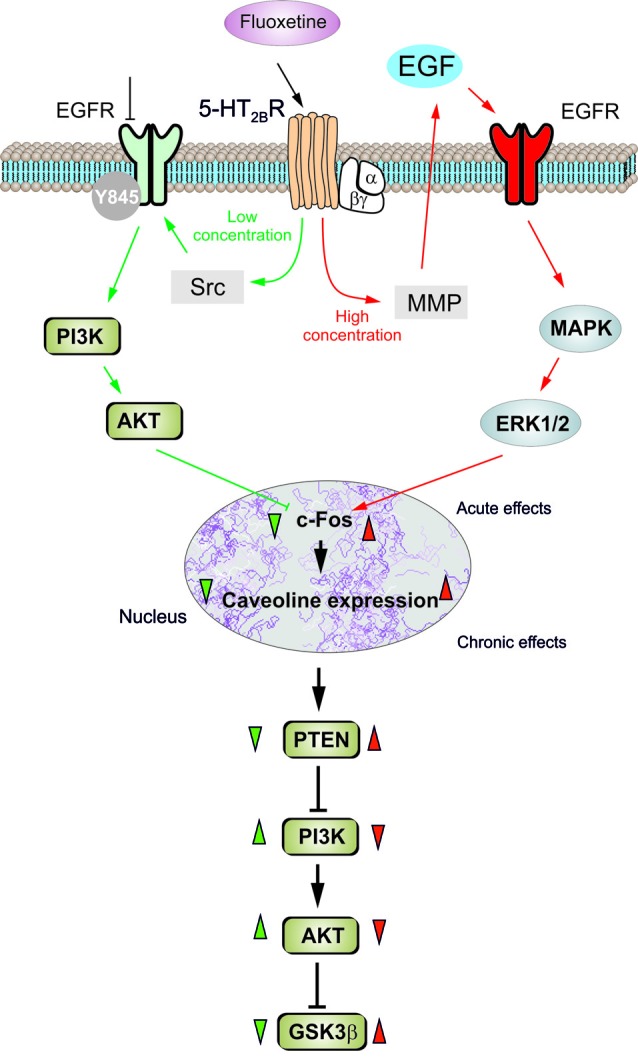Figure 7.

Schematic illustration of biphasic concentration-dependent regulation of Cav-1 gene expression and GSK-3β activity by fluoxetine in astrocytes. Acute treatment with fluoxetine at low concentrations (green arrows) stimulates Src which phosphorylates EGFRs and activates PI3K/AKT signal pathway. The AKT phosphorylation by fluoxetine at low concentrations inhibits cFos gene expression, and subsequently decreases Cav-1 gene expression (chronic effects) that in turn, decreases membrane content of PTEN, induces phosphorylation and stimulation of PI3K and elevates glycogen synthase kinase 3β (GSK-3β) phosphorylation thus suppressing its activity. At higher concentrations fluoxetine (red arrows) stimulates metalloprotinase and induces shedding of growth factor which stimulates EGFRs and activates MAPK/ERK1/2 signal pathway. The ERK1/2 phosphorylation by fluoxetine at high concentrations stimulates cFos gene expression, and subsequently increases Cav-1 gene expression (chronic effects), that acts on PTEN/PI3K/AKT/GSK-3β in an inverse fashion (Summary of results in the present work and in Bai et al., 2017).
